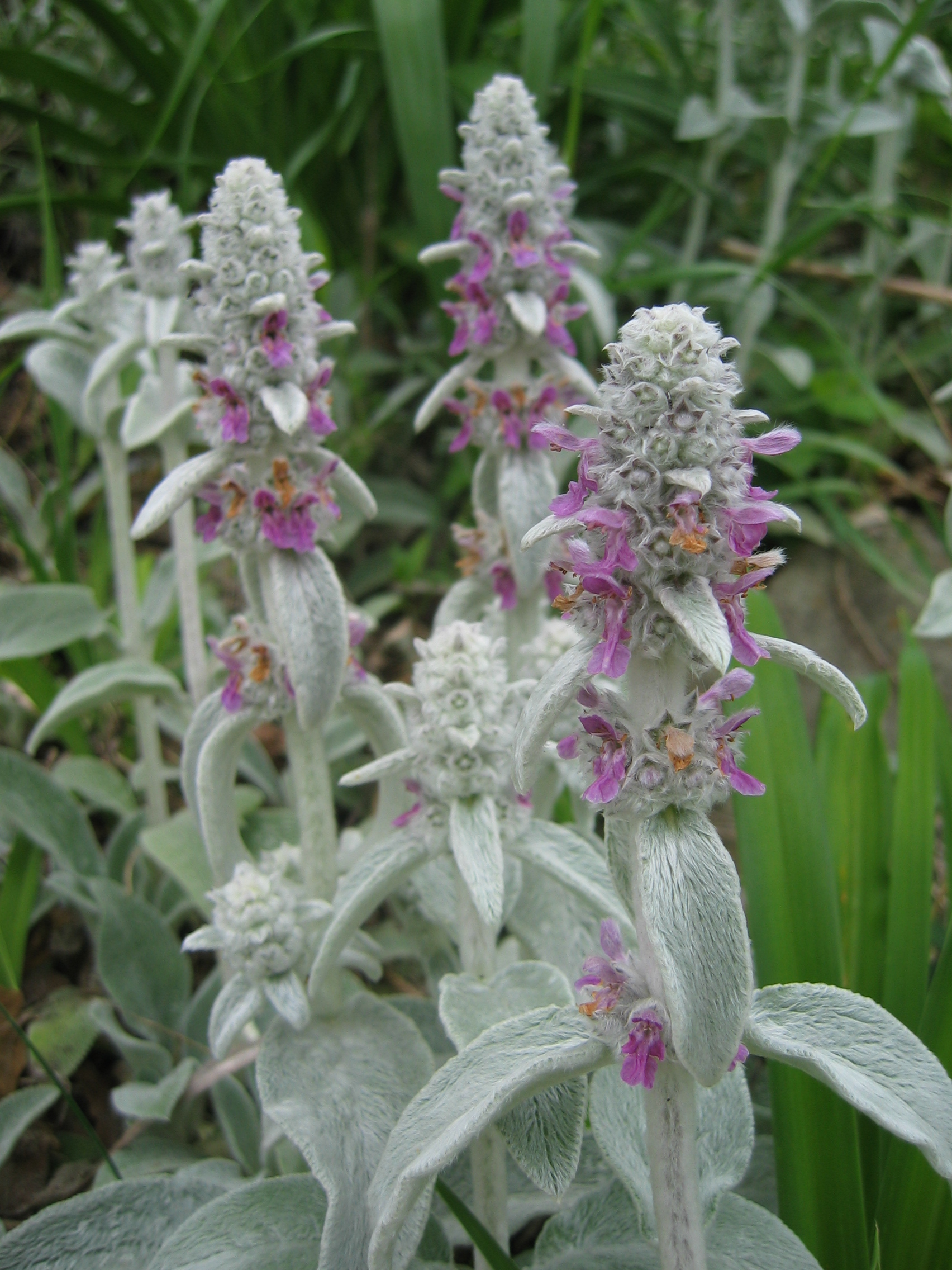 The fleshy soft, hairy leaves delight children and any adult not too far gone to take pleasure in simple tactile sensations. The purple flowers make a gorgeous contrast to the whitish hairs of the leaves and stems, but appear only for a relatively short time. This is a garden favorite that seeds itself liberally: once you plant Lamb’s Ears, you have them forever, and they pop up in unexpected places. They can often be found in the city as an escape; these plants were growing on a bank in Beechview, where they were blooming at the beginning of June.
The fleshy soft, hairy leaves delight children and any adult not too far gone to take pleasure in simple tactile sensations. The purple flowers make a gorgeous contrast to the whitish hairs of the leaves and stems, but appear only for a relatively short time. This is a garden favorite that seeds itself liberally: once you plant Lamb’s Ears, you have them forever, and they pop up in unexpected places. They can often be found in the city as an escape; these plants were growing on a bank in Beechview, where they were blooming at the beginning of June.
Gray describes the genus Stachys; in his time, this particular species had not established itself in the wild enough for him to take notice of it.
STÂCHYS [Tourn.] L. HEDGE NETTLE. Corolla not dilated at the throat; upper lip erect or rather spreading, often arched, entire or nearly so; the lower usually longer and spreading, 3-lobed, with the middle lobe largest and nearly entire. Stamens 4, ascending under the upper lip (often reflexed on the throat after flowering); anthers approximate in pairs. Nutlets obtuse, not truncate. — Whorls 2-many-flowered, approximate in a terminal raceme or spike (whence the name, from stachys, a spike).
Although Gray does not describe the speciesS. byzantina, no description is really necessary. No other Stachys in our area has anything like the silver-haired foliage of this plant; it is nearly impossible to misidentify.
